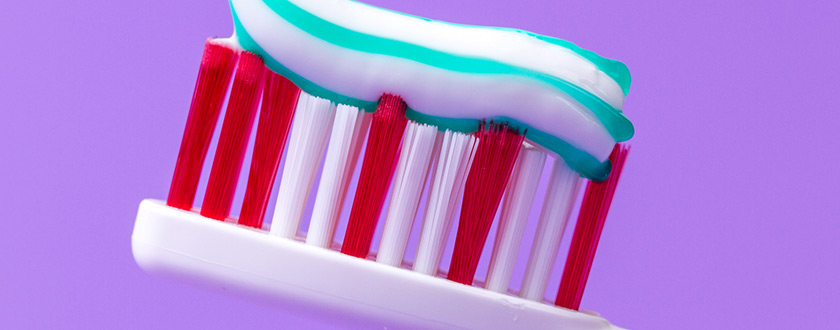How Do Whitening Toothpastes Work?
It’s difficult to find toothpastes these days that don’t promise to whiten your teeth. For years, consumers have realized the benefits of professional dental whitening, which removes years of build-up to restore a bright, stain-free smile. Dental product companies have released their own versions of whitening kits to provide a less powerful but more affordable version of what a patient can get in the dental office.
Whitening toothpastes require less of a commitment than a whitening process, slightly reducing the effects of drinking dark beverages like coffee. But how do these toothpastes work? To a smaller degree, they use some of the same processes professional whiteners use. First, it’s important to understand how teeth get stained in the first place.
A Film over the Tooth
Each tooth contains two protective layers—one layer of protective dentin covered by a layer of enamel. Both of these layers work to protect the tooth as you eat, drink, and chew gum throughout the day. Over time, it’s easy for a film to build up on the enamel of each tooth, especially for those who drink dark beverages like coffee or smoke cigarettes on a regular basis.
Brushing and flossing multiple times each day can minimize discoloration, especially after consuming dark beverages and food items. Having teeth cleaned regularly can also help keep that film from building up over time. Still, many consumers find that even with the best efforts, staining is unavoidable.
Whitening Toothpastes
Like dedicated whitening products, whitening toothpastes generally contain a combination of abrasive cleaners and whitening chemicals like peroxide to gradually whiten teeth over multiple uses. Some toothpastes contain a chemical called blue covarine to provide immediate results, minimizing yellowing. Because of this, toothpastes containing blue covarine are said to rely less on abrasive cleaners, making them potentially less damaging to the enamel.
While most whitening toothpastes are safe when used in moderation, dentists caution against prolonged use. There is still uncertainty over whether the abrasive cleaners and bleaches could eventually wear down enamel, allowing bacteria and plaque to damage the tooth beneath. Consumers are advised to use whitening toothpastes on a short-term basis or combine it with other types of toothpaste.
Safety First
Prior to using a whitening toothpaste, patients should consult their dentists. A dentist may have free samples or recommendations specific to each patient, based on his dental history. The American Dental Association (ADA) ranks toothpastes by their abrasiveness, so consult this list before you head to the grocery store. In addition to alternating whitening toothpaste with regular toothpaste, patients may also need to add in a sensitivity toothpaste or mouthwash. The chemicals in whitening products usually cause at least a small degree of tooth sensitivity.
When used in moderation, whitening toothpastes can minimize staining of the enamel more than regular toothpastes. It’s important that consumers use these products responsibly to avoid damage to the tooth. Patients should mention the whitening toothpaste to their hygienists at each dental checkup to allow their dental professionals to check for any negative impact to teeth or gums after using these products regularly.





